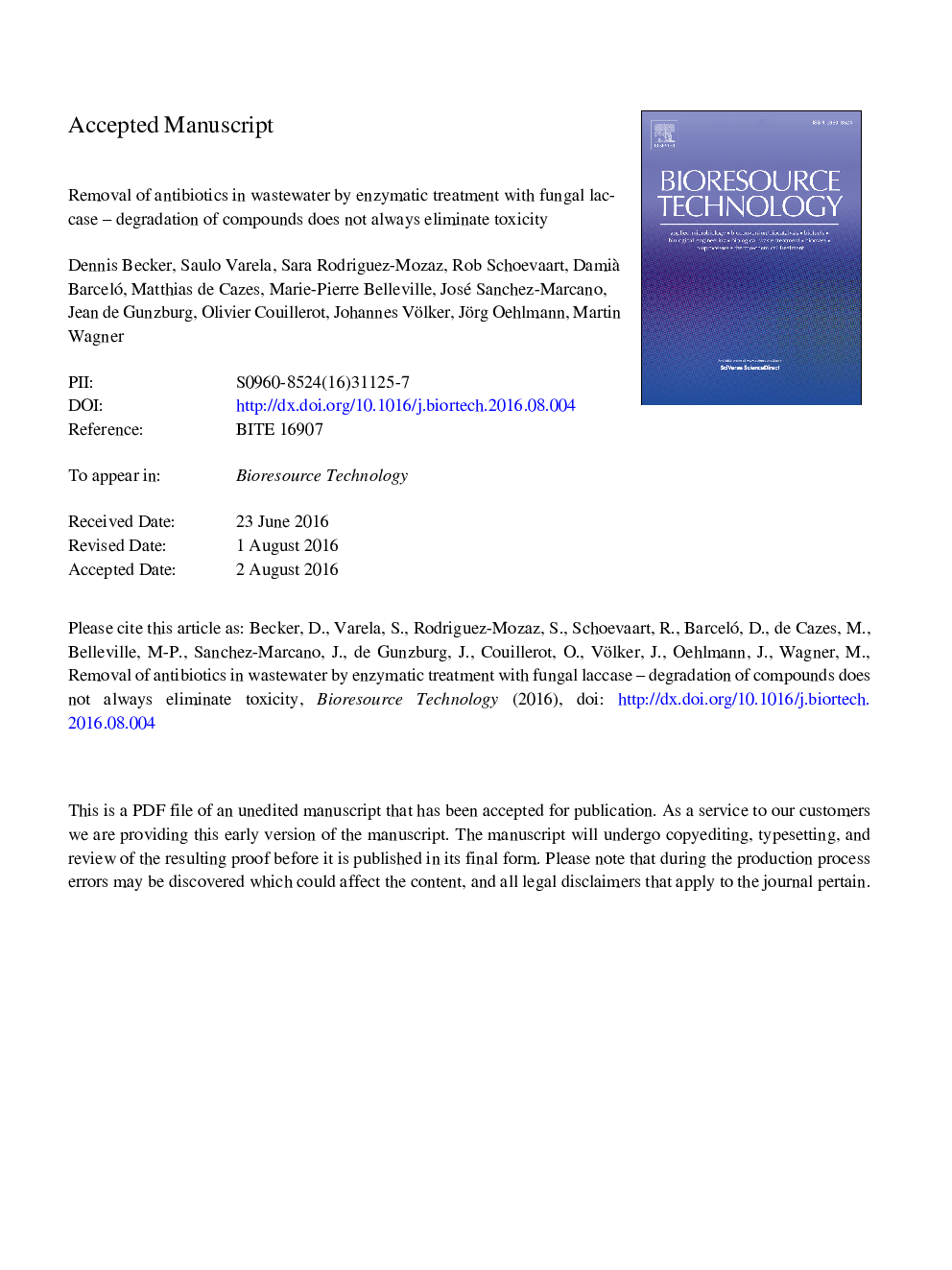| Article ID | Journal | Published Year | Pages | File Type |
|---|---|---|---|---|
| 7069741 | Bioresource Technology | 2016 | 37 Pages |
Abstract
In this study, the performance of immobilised laccase (Trametes versicolor) was investigated in combination with the mediator syringaldehyde (SYR) in removing a mixture of 38 antibiotics in an enzymatic membrane reactor (EMR). Antibiotics were spiked in osmosed water at concentrations of 10 μg·Lâ1 each. Laccase without mediator did not reduce the load of antibiotics significantly. The addition of SYR enhanced the removal: out of the 38 antibiotics, 32 were degraded by >50% after 24 h. In addition to chemical analysis, the samples' toxicity was evaluated in two bioassays (a growth inhibition assay and the Microtox assay). Here, the addition of SYR resulted in a time-dependent increase of toxicity in both bioassays. In cooperation with SYR, laccase effectively removes a broad range of antibiotics. However, this enhanced degradation induces unspecific toxicity. If this issue is resolved, enzymatic treatment may be a valuable addition to existing water treatment technologies.
Related Topics
Physical Sciences and Engineering
Chemical Engineering
Process Chemistry and Technology
Authors
Dennis Becker, Saulo Varela Della Giustina, Sara Rodriguez-Mozaz, Rob Schoevaart, Damià Barceló, Matthias de Cazes, Marie-Pierre Belleville, José Sanchez-Marcano, Jean de Gunzburg, Olivier Couillerot, Johannes Völker, Jörg Oehlmann, Martin Wagner,
